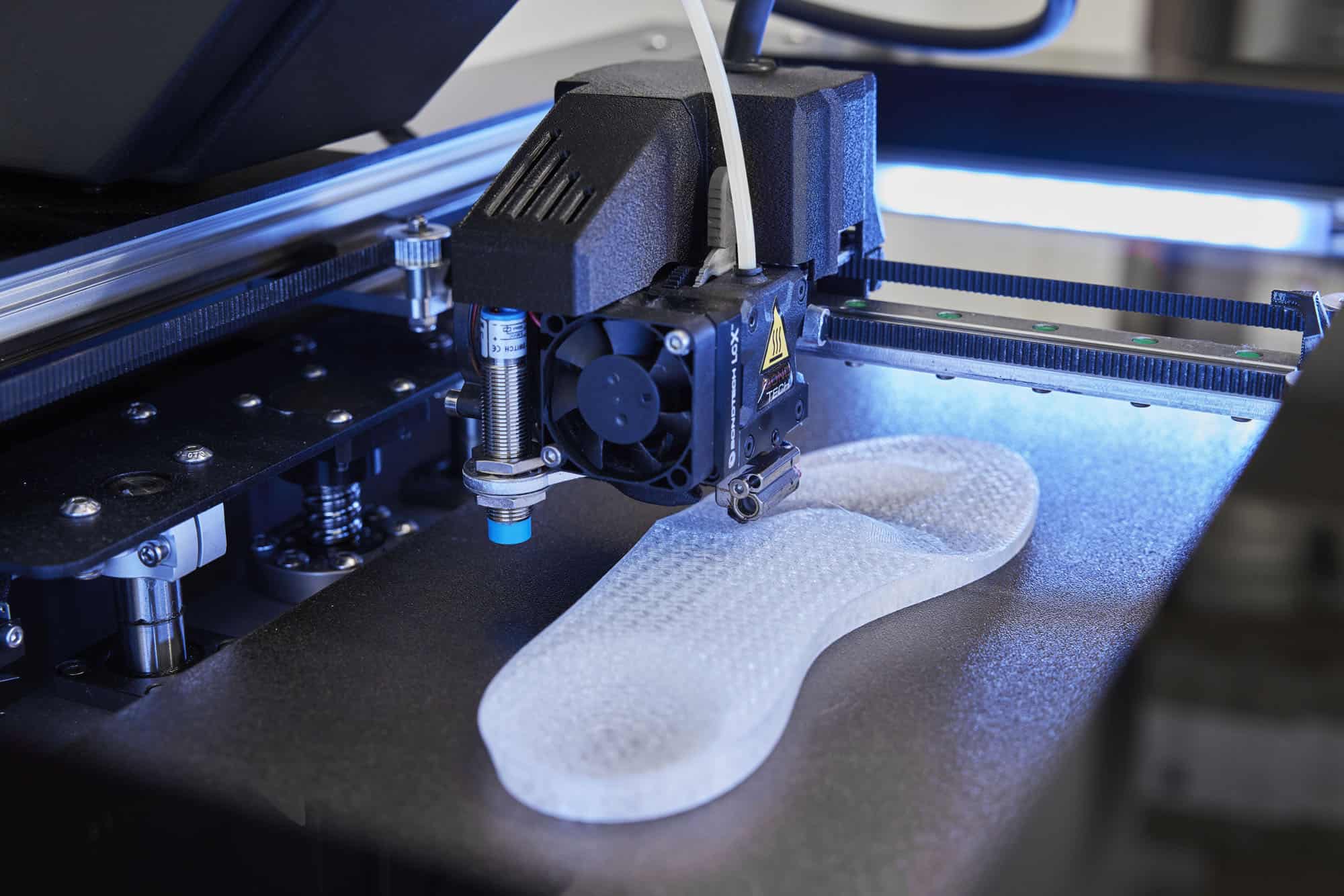Sustainable orthotic devices: balancing patient needs with environmental responsibility
Did you know that the healthcare industry leaves a massive strain on the environment? The production of healthcare devices significantly impacts our planet, from single-use material to energy-intensive production equipment. Production of many orthopedic devices contributes to this problem due to subtractive manufacturing, also known as CNC milling, which generates dust in the work environment and massive amounts of unrecyclable waste.
However, new technology is emerging, which paves the way for a balance between the needs of patients and environmental responsibility.
In this blog post, we’ll explore the topic of sustainability in orthopedic devices and how it can improve patient outcomes while reducing the industry’s impact on the environment. So, if you’re ready to learn about the future of sustainable healthcare, read on.
Disrupting the production of seats and cushions for wheelchairs
One real-life example of sustainability transition from the traditional crafting of wheelchair seats with the use of foam blocks to modern 3D printing additive manufacturing. Foam blocks have been the conventional method of creating customized wheelchair seats for many years, but the process is wasteful, labor-intensive, and therefore has negative environmental impacts
We are still waiting to see a recycling scheme for traditional foam products that do not entail burning.
3D printing additive manufacturing is a newer method to create customized wheelchair seats with zero waste and minor environmental impact. The process involves using computer-aided design (CAD) software to create a 3D seat model, which is then printed layer by layer using recyclable materials – the recycling scheme is a natural part of the business case.
By transitioning from foam block crafting to 3D printing additive manufacturing, orthopedic device manufacturers can promote sustainability while improving patient care quality. This new technology allows for greater customization and faster production times, improving patient experience and outcomes.
How sustainable is the business case?
The wheelchair seats are a good example of how sustainable practices can be integrated into manufacturing orthopedic devices and how innovation can lead to more environmentally-friendly solutions.
But why should we care so much about sustainability?
Sustainability in orthopedic devices is a shared responsibility to care for our planet, and it also makes good sense from a business perspective. As we strive towards the United Nations Sustainable Development Goals (SDGs), including SDG 12: Responsible Consumption and Production, the healthcare industry has a unique opportunity to reduce its environmental impact while improving patient care.
A report by the United Nations Global Compact and Accenture found that businesses that actively pursue sustainable practices are more likely to succeed in the long term. Because sustainable practices help to mitigate risks, enhance brand reputation, and create new market opportunities.
Furthermore, orthopedic device manufacturers can benefit financially by adopting a sound sustainable business model by implementing new practices such as 3D printing additive manufacturing. For example, 3D FDM printing can reduce waste and material costs while increasing production efficiency and customization. Additionally, companies that prioritize sustainability are often viewed more favorably by customers and investors, leading to increased market share and profitability.
By incorporating sustainable practices such as additive manufacturing into the design and manufacture of orthopedic devices, manufacturers can reduce their environmental impact and improve their bottom line, which is a win-win situation for both the industry and the planet.
Make a responsible choice
Create it REAL’s Embrace solutions offer off-the-shelf CAM (Computer-aided manufacturing) systems for custom-made orthopedic insoles, seats, cushions, corsets, spinal braces, and body jackets that are 3D printed using a specialized 3D printer and build preparation software. Both the software and printer are constructed, dedicated, and optimized with a high focus on user-friendliness. This makes it easy for healthcare providers to create custom devices without the need for extensive 3D print knowledge.
The building preparation software is designed to hide complexity, so even users unfamiliar with 3D printing can easily navigate the software and create customized devices. Additionally, the software provides step-by-step guidance through printing, which makes it easy for healthcare providers to prepare and print the applications with minimal effort.

Similarly, the specialized Embrace 3D printer is designed with easy operations in mind. Cleaning and maintenance of the printer are guided, and the printer is designed to be ready to use, with minimal training required, which makes it effortless for healthcare providers to integrate Embrace’s 3D printing technology into their workflow and begin creating customized orthopedic devices for their patients.
Overall, Embrace’s user-friendly software, specialized 3D printer, and fully recyclable material make it easy for healthcare providers to create high-quality custom orthopedic devices without prior knowledge, expertise, or training in 3D printing technology. This ease of use ensures that more patients can benefit from Embrace’s innovative solutions, improving their quality of life and promoting sustainability in the healthcare industry.




1 Comment